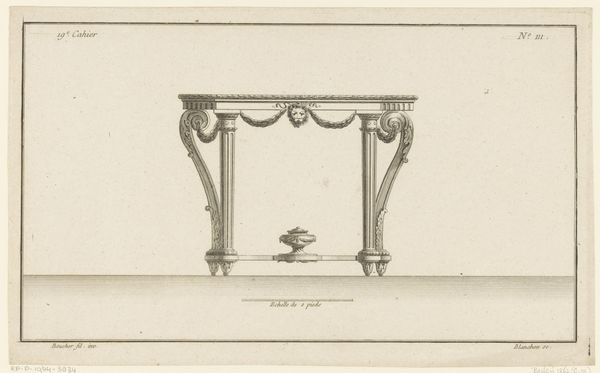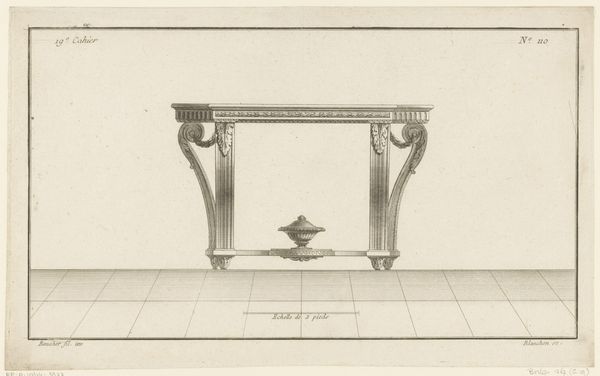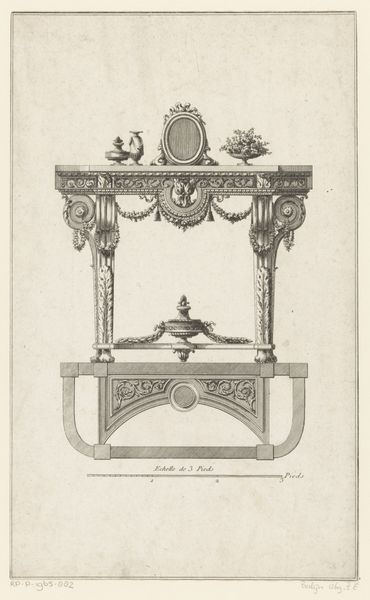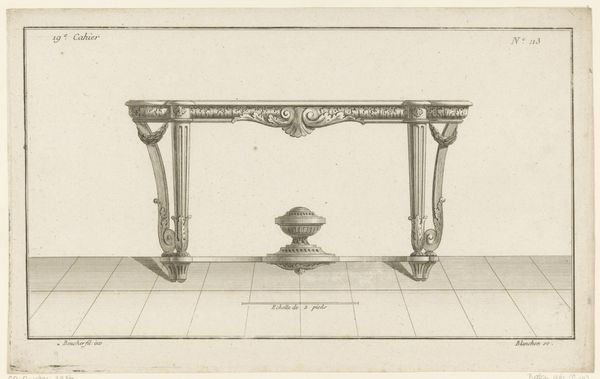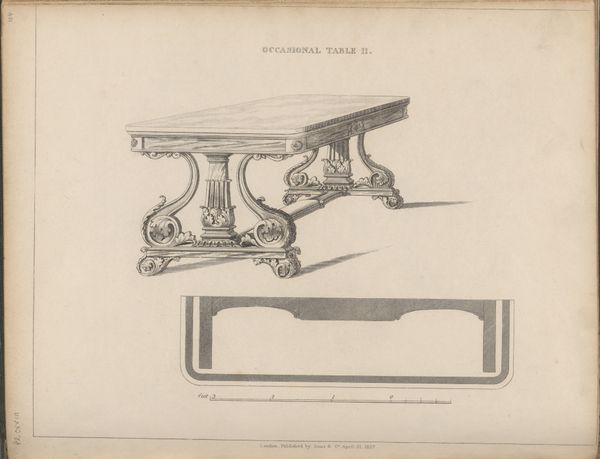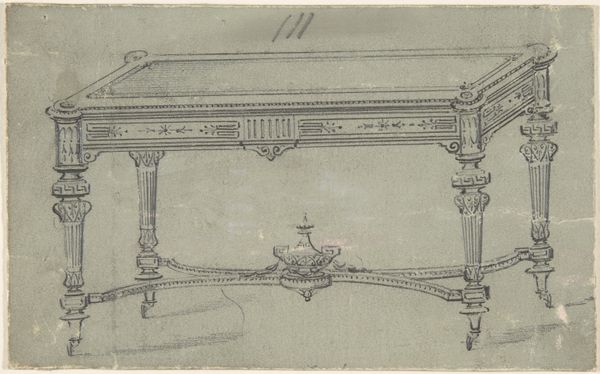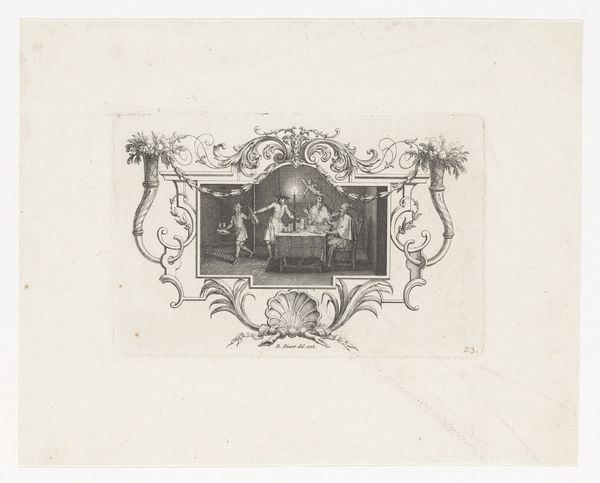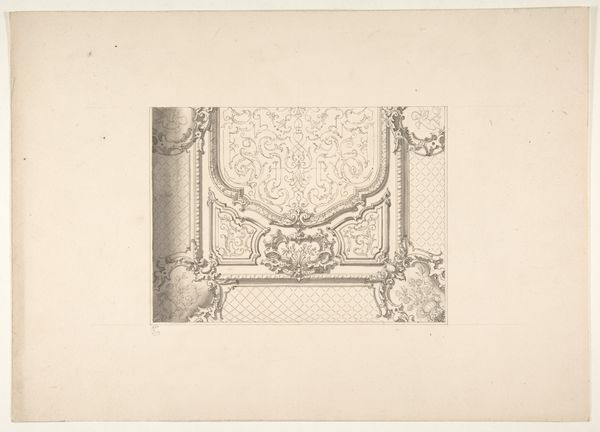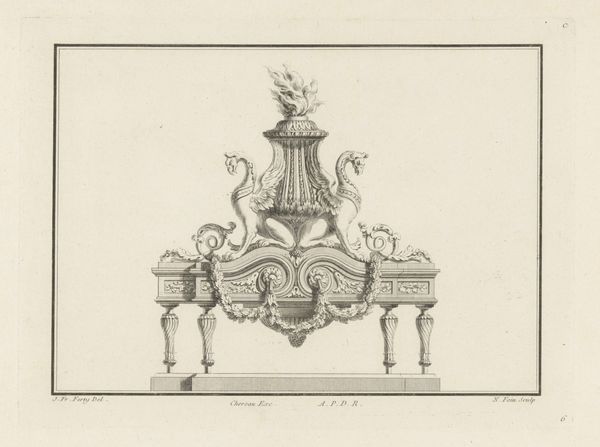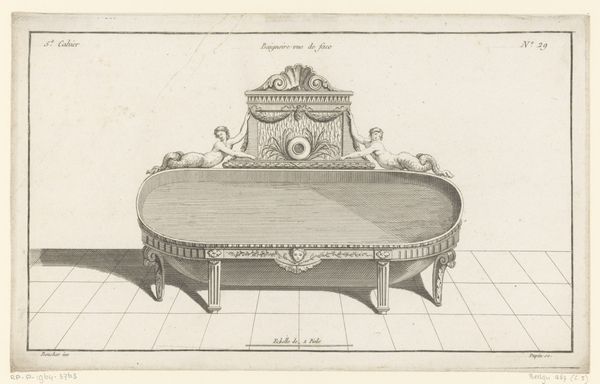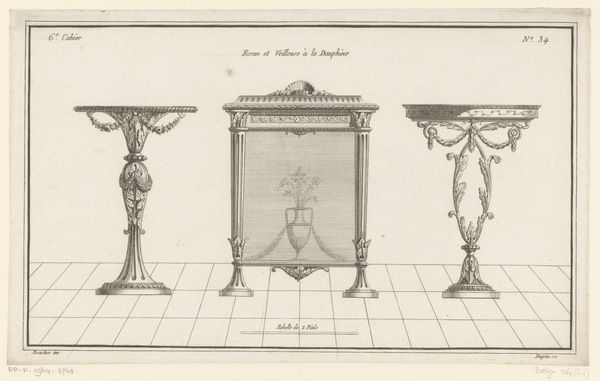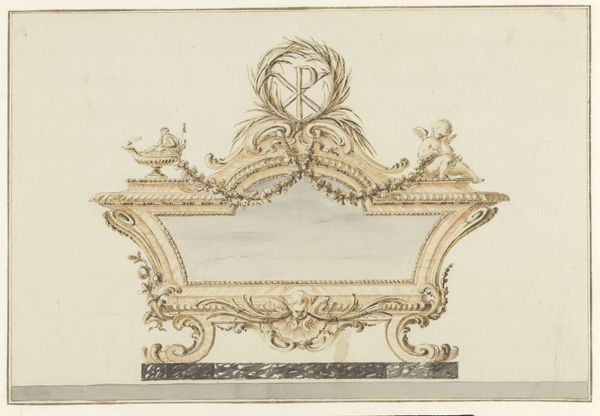
drawing, pen
#
drawing
#
neoclacissism
#
geometric
#
pen
#
academic-art
Dimensions: height 199 mm, width 328 mm
Copyright: Rijks Museum: Open Domain
Editor: Here we have Jean Guillaume Blanchon's "Tafel met vaas en bloemmotief," a pen drawing from the late 1770s at the Rijksmuseum. It's such a clean and precise rendering; almost sterile. What stands out to you about this piece? Curator: This drawing encapsulates the Neoclassical obsession with order and idealized forms, but within that supposed "sterility," we find potent social implications. What does it mean to design such a table during a period of immense social stratification and revolution? This isn't merely about aesthetics; it's a statement of power and aspiration. Editor: I see your point. The crisp lines do give it a sort of authority. Curator: Precisely. Consider the floral motifs; even they are rendered with controlled elegance. In this period, these motifs weren't innocent decoration. They represented cultivation, refinement—qualities associated with the aristocracy, wouldn’t you agree? Editor: That makes me wonder, was this design meant to be accessible to the general public, or was it exclusive? Curator: Absolutely exclusive! It speaks volumes about who gets to determine beauty and how it is weaponized through design. The perfect symmetry, the controlled ornamentation - this wasn’t meant for everyone. It served to maintain the class divide and communicate power structures through domestic objects. How do you view that intention within our contemporary values? Editor: I hadn't considered the social aspect so deeply. Now I realize this drawing isn’t just about design; it's about power, social class, and the very loaded idea of refinement during a tumultuous period. Curator: Exactly! By interrogating the history and context behind the art, we reveal powerful insights into culture and beliefs, enabling us to be much more perceptive.
Comments
No comments
Be the first to comment and join the conversation on the ultimate creative platform.
